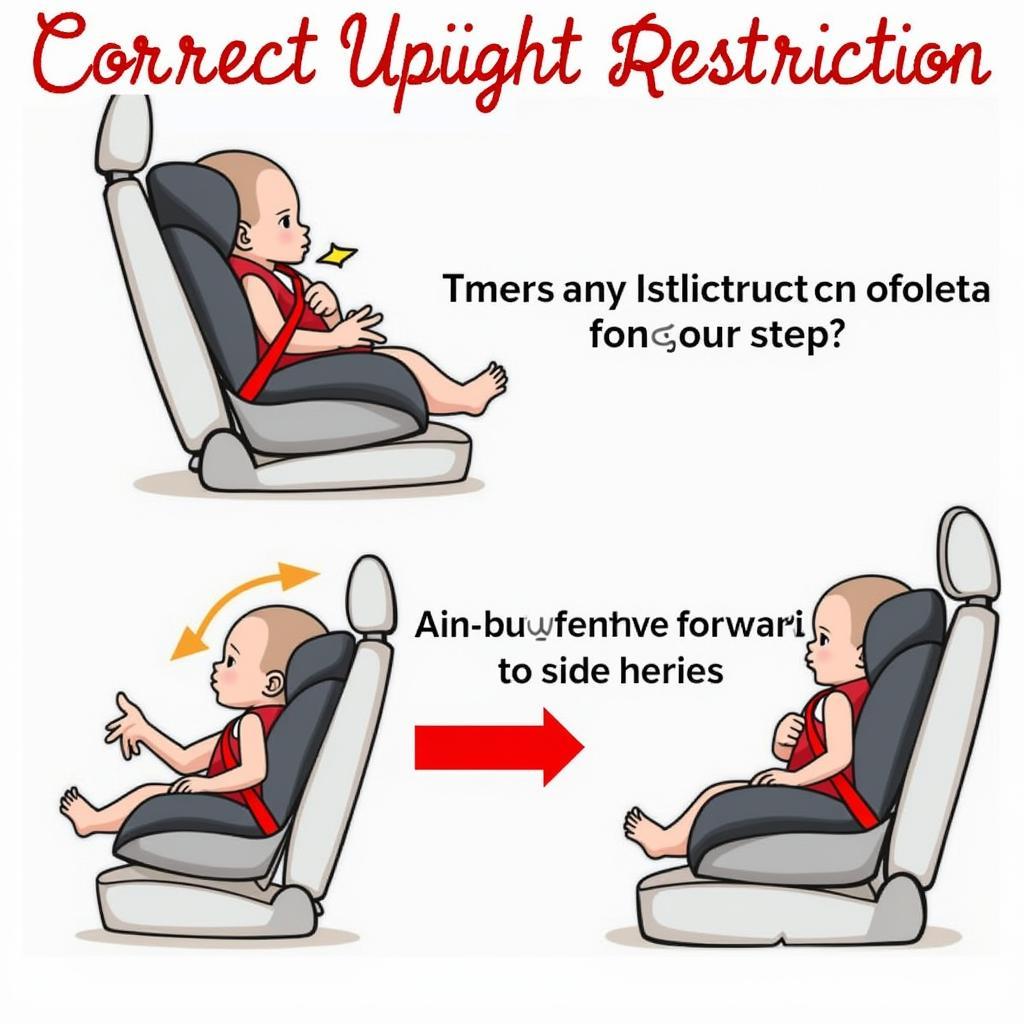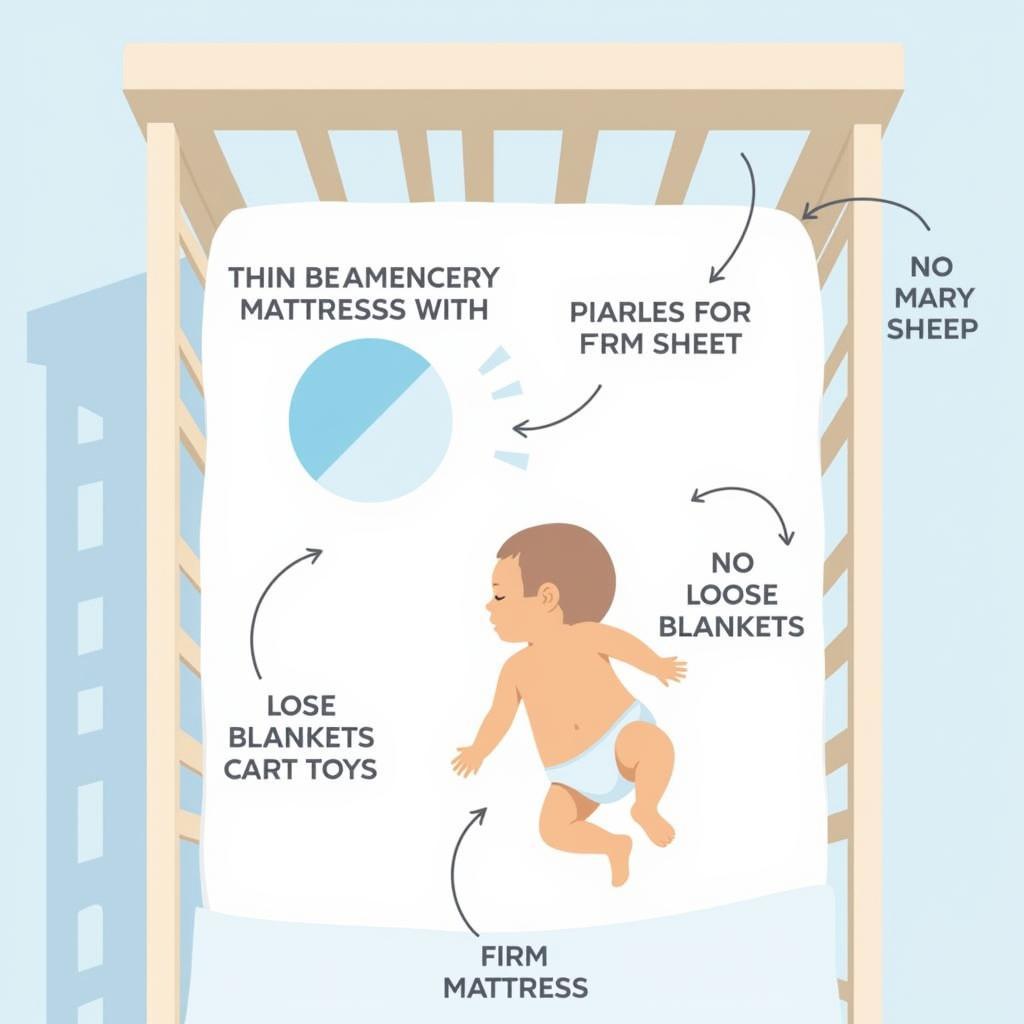A father’s heartfelt warning about the dangers of infants sleeping in car seats outside of vehicles has gone viral, sparking a crucial conversation about infant safety. While car seats are indispensable for travel safety, they are not intended for extended sleep, especially unsupervised. This comprehensive guide delves into the reasons behind this warning, the potential risks involved, and essential safe sleep practices for your baby.
Why Car Seats Aren’t Meant for Sleeping: A Closer Look
Car seats, while engineered for protection during travel, present potential hazards when used as sleep spaces for extended periods. This is primarily due to their design and the physiology of infants.
The Angle of Concern: Understanding Positional Asphyxia
The semi-reclined design of a car seat, while necessary for crash safety, can pose a risk of positional asphyxia, especially in infants with underdeveloped airway control.
- How it Happens: When an infant slumps forward or to the side in a car seat, their airway can become compressed, restricting their breathing.
- Silent Danger: Positional asphyxia can occur silently and rapidly, making it even more dangerous, especially during sleep when supervision might be less vigilant.
 Infant in Car Seat: Correct Positioning
Infant in Car Seat: Correct Positioning
Beyond Position: Other Risks Associated with Prolonged Car Seat Sleep
Beyond positional asphyxia, prolonged sleep in car seats can contribute to:
- Flat Head Syndrome (Plagiocephaly): An infant’s soft skull is vulnerable to developing flat spots if they remain in the same position for extended periods.
- Delayed Motor Development: Spending excessive time in a confined position can hinder an infant’s ability to roll, crawl, and develop other essential motor skills.
- Gastrointestinal Issues: The reclined position can exacerbate reflux in some infants, leading to discomfort and potential feeding difficulties.
Expert Insights: What the Professionals Say
[Quote by a fictional pediatrician]: “While car seats are designed for safe transportation, they should never be used as a substitute for a crib or bassinet for routine sleep. It’s crucial to prioritize a safe sleep environment that promotes healthy breathing and development.”
Creating a Safe Sleep Haven for Your Baby: Essential Tips
Ensuring your baby’s sleep environment is safe is non-negotiable. Here’s how to create a haven that prioritizes their well-being:
- Back to Basics: Always Place Baby on Their Back: Whether in a crib, bassinet, or travel cot, placing your baby on their back for sleep dramatically reduces the risk of SIDS (Sudden Infant Death Syndrome) and promotes clear airway passage.
- Firm is Fair: Choose a Firm Sleep Surface: Opt for a firm mattress that fits snugly in the crib or bassinet, leaving no gaps or spaces where your baby could get trapped.
- Keep it Clean and Clear: Remove all soft bedding, toys, and loose blankets from the sleep area to minimize the risk of suffocation or overheating.
- Room-Sharing, Not Bed-Sharing: Sharing a room with your baby for the first six months to a year is recommended, but avoid bed-sharing to prevent accidental suffocation.
- Pacifier Power: Offering a pacifier at sleep time has been linked to a reduced risk of SIDS. Always ensure the pacifier is one piece and never attached to strings or ribbons.
 Safe Sleep Environment for Baby
Safe Sleep Environment for Baby
Recognizing the Signs of Infant Breathing Difficulty
Being able to identify signs of breathing difficulties in your baby is paramount. Watch for:
- Noisy Breathing: Wheezing, grunting, or high-pitched sounds while breathing.
- Fast Breathing: A rapid breathing rate, more than 60 breaths per minute.
- Chest Retractions: The skin between the ribs or below the rib cage pulling inward with each breath.
- Nasal Flaring: The nostrils widening with each breath.
- Bluish Skin Color: A bluish tinge to the skin, particularly around the lips and nail beds.
If you observe any of these signs, seek immediate medical attention.
Dad’s Warning: A Call to Action
The viral message from a concerned father serves as a powerful reminder that awareness and education are crucial in preventing preventable accidents. While car seats are non-negotiable for safe travel, they are not designed for extended sleep. By understanding the risks involved and adhering to safe sleep guidelines, we can collectively create a safer world for infants.
Frequently Asked Questions
1. How long can a baby safely sleep in a car seat?
While car seats are essential for travel, they are not intended for prolonged sleep. Ideally, babies should be moved to a safe sleep surface like a crib or bassinet for extended rest.
2. What is the best angle for a baby to sleep in a car seat?
The safest angle for a baby in a car seat is the angle recommended by the manufacturer, ensuring a snug harness fit and proper airway support.
3. What should I do if my baby falls asleep in the car seat during a short trip?
If your baby falls asleep in the car seat during a short trip, it’s generally safe as long as they are supervised. However, transferring them to a safe sleep environment once you reach your destination is recommended.
4. Are there any car seats designed specifically for sleeping?
No, there are no car seats specifically designed for sleeping. All car seats are primarily engineered for safety during travel and should not be used as a substitute for a crib or bassinet.
5. What are the signs of a safe sleep environment?
A safe sleep environment includes a firm mattress, a fitted sheet, no loose blankets or toys, and a cool, well-ventilated room. The baby should be placed on their back for sleep.
6. Where can I find more information about safe sleep practices?
Reputable organizations like the American Academy of Pediatrics (AAP) and the National Institutes of Health (NIH) provide comprehensive resources and guidelines on safe sleep practices for infants.

